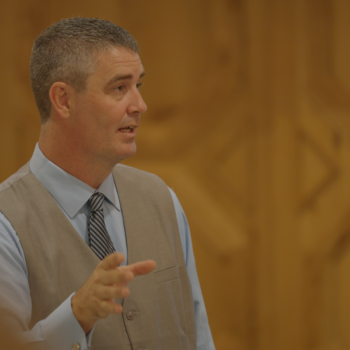The golf car industry has emerged from years of disruption, revealing a clear path forward: success will come from innovation, professional partnerships, and a focus on win-win relationships between OEMs and dealers. Companies that rely on outdated tactics or protectionism will falter, while those that invest in professionalism, strong dealer support, and continuous improvement will thrive. The future belongs to organizations that prioritize collaboration and transformation over short-term gains.
The Future of the Golf Car Industry is Now Clear
The golf car industry has recently weathered a few years of transformation—boom and bust cycle, a surge of imports, downward price pressure, and now tariffs. After years of disruption and adjustment, the future of the industry is coming into focus. It is clear that golf cars are following the same path as bicycles, lawnmowers, and sewing machines. The golf car industry is splitting into two categories, retail and premium.
Think about bicycles: You can buy one at Walmart for $150, yet premium brands like Trek sell bikes for $1,500 every day—and some models even fetch $15,000. This shift from low-cost volume sales to a clear stratification of premium and budget markets offers a roadmap for the golf car industry’s future.
A Time of Opportunity and Challenge
We have just emerged from a period when new players could make a modest investment, source products globally, and launch their own brands. These startups, despite their lack of industry experience, were able to compete effectively with long-established companies.
For legacy players, this disruption exposed a critical vulnerability: a failure to evolve and differentiate. Rather than focusing on innovation, some turned to external measures to restrict competition. They lobbied for regulatory changes, seeking government intervention to mitigate the threat posed by newcomers. But history shows that protectionism is a temporary shield—it cannot replace genuine advancement.
The market does not reward those who look backward. It rewards those who improve, innovate, and deliver real value. The days of relying on history and external support are coming to an end. The future belongs to companies that are ready to progress.
Building a Dealer-Centric Organization
For OEMs, the path forward is not about going-it alone. Success lies in forging strong, mutually beneficial relationships with dealers. A win-win dynamic between OEMs and dealers isn’t just a nice-to-have; it’s the cornerstone of long-term success.
To thrive, OEMs must implement robust processes and make strategic investments that enable dealers to succeed. Dealers are the connection to the customer, and their success is directly tied to the OEM’s. Supporting them with the right tools, resources, and collaboration ensures not only the dealer’s growth but also the OEM’s sustainability.
This mindset shift—away from short-term gains toward a partnership approach—creates a foundation for lasting growth. It aligns both sides to shared goals, enabling them to adapt and respond to market demands together.
The Playbook for Success
The good news is that the path to success is clear. There is a playbook—and resources available—to guide the transition. Here’s what it takes to thrive in the new era of the golf car industry.
- Professional Territory Managers
The role of a Territory Manager (TM) is critical for maximizing revenue from a geographic area. However, success doesn’t come from pressuring dealers into larger orders—it comes from fostering success for the dealers themselves.
Key traits of an effective Territory Manager:
- Dealer-Centric Focus: They understand that the dealer is not a customer. They are a partner. A TM must educate, equip and motivate dealers for growth.
- Proficiency in Revenue Centers: They should be well-versed in the five key revenue centers of a dealer’s business, understanding how to optimize each. Whole-dealer health leads to sales success.
- Bridge Builders: Great TMs act as a vital communication link between the OEM and the dealer, ensuring both sides are aligned on goals and strategies.
- Professional Sales Leaders
Behind every strong team of Territory Managers is a Professional Sales Leader. Their job is to build and support this team, ensuring every TM is equipped to succeed.
Key responsibilities of a Sales Leader:
- Team Development: Evaluate Territory Managers—both potential hires and existing team members—and drive improvements through recruiting, training, and providing tools.
- Communication Hubs: Act as a conduit between leadership and the field, translating strategic vision into actionable insights for the TMs.
- Performance Oversight: Continuously monitor and enhance the team’s effectiveness.
- Professional Dealers
Dealers are the final link in the chain—and arguably the most critical. Professional dealers are not just sales outlets; they’re brand ambassadors. Success requires fostering dealer relationships that prioritize quality and shared goals over short-term gains.
The Industry’s Path Forward
The golf car industry stands at a crossroads. Some companies are relying on tactics to limit competition rather than leaning into the hard work of differentiation and progress. But the market is clear: those strategies won’t create lasting success.
We have seen it before in other industries, and we know what works. Companies that prioritize professionalism—at every level of their operation—set the standard for success. The playbook is here. The companies that embrace it and commit to continuous improvement will define the next chapter of the golf car industry.
The question is: Who is ready to lead the way?






